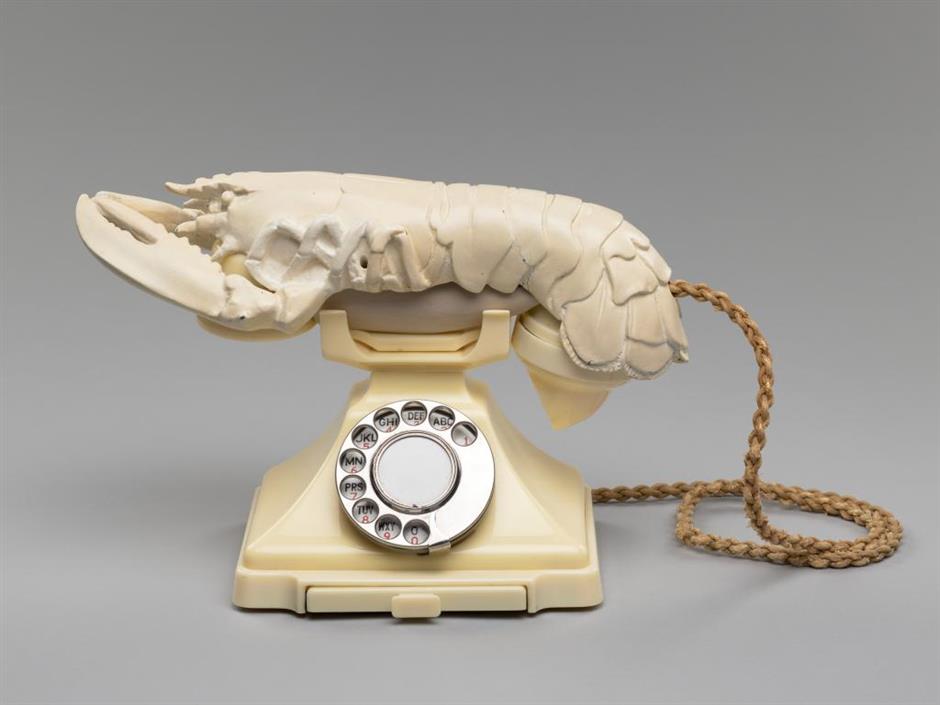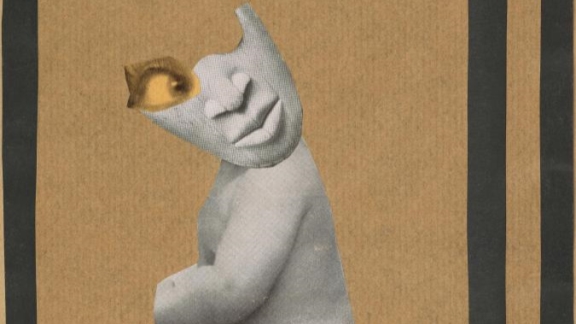
Salvador Dalí (1904–1989) and Edward James (1907–1984), Lobster Telephone, 1938, Painted plaster and Bakelite telephone
Purchased through the Henry and Sula Walton Fund, with assistance from the Art Fund 2018
ⓒ Fundació Gala-Salvador Dalí, VEGAP, 2024
Leonora Carrington (1917–2011), Portrait of Max Ernst, about 1939, Oil on canvas
Purchased with assistance from the Henry and Sula Walton Fund and the Art Fund 2018
ⓒ 2024 Estate of Leonora Carrington /Artists Rights Society (ARS), New York
This year marks the 100th anniversary of the publication of the Surrealist Manifesto, written by poet André Breton.
“Fantastic Visions: 100 Years of Surrealism from the National Galleries of Scotland,” organized by the Museum of Art Pudong (MAP) in conjunction with the National Galleries of Scotland, is currently underway at the MAP.
The exhibition features more than 100 major works by over 50 artists, including some of the world’s most important surrealists such as Salvador Dalí, René Magritte, Max Ernst, Joan Miró, Leonora Carrington, and Dorothea Tanning.
All the works come from the collection of the National Galleries of Scotland, ranging from painting, sculpture, paper rubbings, collage, and photography to manuscripts and books.
Surrealism, one of the most influential art movements of the 20th century, is known for unleashing imagination and unconventional means of expression.
The rise in Surrealism was a response to the horrors of war, and the ongoing threats presented by the modern world. Artists resorted to psychic automatism, emphasizing the importance of the subconscious mind in artistic creation.
Inspired by the psychoanalytic writings of Sigmund Freud, Surrealist artists gave up conventional techniques and explored the subconscious.
Dadaism and Surrealism laid a foundation for later emerging movements such as Abstract Expressionism and Pop Art.
René Magritte (1898–1967), The Magic Mirror, 1929, Oil on canvas
Bequeathed by Gabrielle Keiller 1995
Public Domain ⓒ National Galleries of Scotland
The exhibition is divided into three periods: “1916–1929 From Dada to Surrealism,” “1930–1938 Surrealism Expands, and 1939 – Late 20th Century Surrealism in Exile” and “The Post-War Period.”
The exhibition sheds light on the “convulsive beauty,” as Breton put it.
“The Lobster Telephone,” one of the most celebrated works of Surrealist art, is an example of an “assisted ready-made”: an ordinary object altered in a specific way to give it a whole new meaning.
Another exhibit, Dalí’s “Exploding Raphaëlesque Head,” demonstrates his “paranoiac-critical method” for re-interpreting reality. His route to the subconscious involved conscious mis-readings of reality, overturned the accepted understanding of the world by taking paranoid delusions seriously.
Magritte used a uniquely heightened realism to depict a Surrealist world. In “The Magic Mirror,” he explored the complex and multi-layered relationship between words and images. The appearance of the French words corps humain (human body) in the work suggests an enigmatic interplay between images and words.
Exhibition info:
Date: Through August 31, 2024, 10am—9pm
Address: 2777 Binjiang Ave
Admission: 100 yuan
滨江大道2777号

